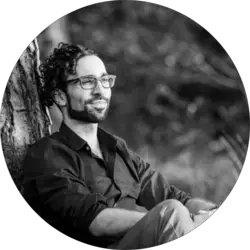![How To Deal With Sensory Overload [9 Tips For Overstimulation]](https://happyrubin.com/wp-content/uploads/2019/12/ik-ben-overprikkeld-150x150.jpg)
NLP Communication Model [Clear Explanation]
![NLP Communication Model [Clear Explanation]](https://happyrubin.com/wp-content/uploads/2017/08/nlp-communicatiemodel-voorbeeld.jpg)
What is the NLP communication model? We form our unique mental maps of the world as a result of a number of steps that take place in each person. What those steps are is described exactly here. In this article we discover this model. Read more…
Contents of this page:
Note: This is John Grinder’s explanation of the NLP Communication Model
In this article the explanation has been incorporated as published in ‘Whispering in the Wind’ by John Grinder. This is a more complete and extensive variant of the often very simple explanation of the communication model. Moreover, Grinder does not even mention the word ‘communication model’. He calls it NLP epistemology.
Let’s start with an understandable video about the NLP Communication Model
View this comprehensive and comprehensive explanation of the NLP Communication Model
Have you noticed that the communication model does not immediately explain something about communication?
When you read the name ‘communication model’ you may have thought that you can learn how to communicate with this model. The communication model is about something much more important that allows you to have deep respect and understanding for others. This means you ultimately communicate at a fantastic level.
The communication model is therefore not literally about learning to communicate, but it provides insight into the pitfalls of communication , among other things. It teaches us that we can only communicate a fraction of what we mean. And that the other only picks up a fraction of that. And that what we mean is also a fraction of the reality.
Then let’s dive into the model now …
The map is not the area – Insight in the 3 ways we filter
If you are going to make a map of a place of residence, you will of course not show all the trees, all houses and all flowers on the map. The map of the place of residence is therefore not the same as the place of residence itself (the reality).
“The map is not the area.”
– One of the most iconic presuppositions of NLP.
The same goes for how we experience ‘our reality’. We experience the world through our senses. In this way, a lot of information comes to us at any time, more than we need.
Just think about driving on the highway at 120 kilometers per hour. Notice what can be seen and heard then. All other cars, trees, road signs, etc. We do not need this information. On an unconscious level, a choice is made as to which stimuli penetrate and which do not.
If we allowed all of the sensory information that came our way, we would go crazy.
In our lives we filter the information that comes to us based on our memories, decisions, beliefs, norms, values, goals, our social and cultural background. We do this filtering in three ways:
- Deletion: A biologist can omit everything during the ride except the traffic and the special tree species along the road. Another driver may be passionate about the birds behind the trees. He sees the different animals while leaving out the rest.
- Distortions: we see all individual components as ‘highway’ and not what they are in essence. Maybe we seem to see a deer in the woods along the road and we suddenly get scared, but after a close look we see that it was a fallen tree.
- Generalizations: on most highways you are allowed to drive 120 kilometers per hour, so you automatically assume that this is also possible here. Or you once had an accident while traveling to a big event where there were tons of cars on the road, leading you to conclude that all similar situations, when there are many cars, will cause accidents.
Deletions, distortions, and generalizations have a positive use, but not always …
That filtering is often very useful:
- Distortion creates creativity.
- Generalizations allow you to learn.
- Deletions are good for your health, otherwise you are taking in too much information.
So deletions, distortions, and generalizations are often useful, but they can also be misleading without you realizing. A lot of information is kept under the surface: filtered out. An iceberg can sink a ship because most of the ice is below the surface. This is a negative result of filtering.
To apply this principle in a positive way, you use the Milton Model . You can use the Metamodel as an ‘antidote’ to the Milton model . With that you do the opposite and you bring more information to the surface, which creates more transparency.
Examples of generalizations, deletoions and distortions

Examples of generalization
I once asked someone to push me really hard, and I was going to push back really hard. After a pause for a few seconds, I said, “Okay, grab me again,” as I reached out to him with my hands as well. And what did he do? He started pushing automatically. ‘What are you up to? What do you want to do?’ I asked. He automatically assumed we would push this round too.
In the summer, everyone is looking for shade. Also the dog. The dog searches for the shade before it has received the feedback that the shade is actually cooling. The dog can only do that because it generalizes (it is in his muscle memory).
I was on vacation once and the hotel where I stayed had a swimming pool. Usually door handles all open the same way, but I couldn’t get this door open and I couldn’t get into the pool! This door handle had a very unique way of opening … How many doors in your life are you opening because of your generalizations? As a child you learn that all doors open in a certain way, so doors that open differently, we will not go through … That old one, where you have grown out, is all well known. Most are very comfortable with that. They are used to more of the same. With NLP you learn to do different things. Ask yourself if what you do contributes to who you want to become, or who you have always been …
Examples of omission
Recently someone said to me: “I just answered your e-mail.” This seems like a very complete sentence, but there are omissions that can cause miscommunication. For example, which e-mail is it? In addition, ‘reply’ is a vague verb: this word can mean that the e-mail can also be answered by telephone or SMS. And then you have the word ‘pass’: for some people ‘pass’ may mean more than a week ago.
Another example. I once wrote the following:
Come to
the training
And I said to the whole group read this aloud at once. And what do you think everyone read? The word ‘the’ was only read once, while it really was there twice.
Other examples of omissions:
- Another example of omission is that sometimes I suddenly lose my keys, while an hour later I see that they were all this time in front of me.
- My trainer asked us: what are you aware of now? The air conditioning? Who was not aware of that at first?
Examples of deformation
I once wrote the following on the board:
Wh4t st4nds h3re?
I asked: what does it say here? Everyone said, “What stands here.” No, it says: W H 4 T etc.
Other examples:
- It also happens that I say: ‘I’m going to count from 5 to 0 and at 0 we will jump / say cheese!’ And then everyone is already doing it at 1!
- If someone tells you, “What nice pants!” And if you then think: ‘Yes, yes, sure …’ Then you distort the compliment.
Subjectivity and empathy: everyone experiences the world differently

If two people have the same stimulus, why don’t they have the same response? Because we omit, generalize and distort in different ways. We use our perception and filtering of information to form an internal representation. Each person filters this sensory input in a unique way, so each person perceives the world in a unique way. The phenomenon that this differs from person to person is called subjectivity.
‘Do you swear to tell the truth, the whole truth and nothing but the truth?’
‘Nobody can tell the’ whole truth ‘. It’s subjective. It has been filtered through our own experiences. ‘
– Dr. Lightman (from Lie to Me)
The ‘real reality’ is therefore different from what everyone thinks and also consists of much more information than we consciously perceive. Our internal image cannot possibly contain reality. This phenomenon is known as ‘the map is not the area’.
We can look at the same thing, and yet everyone sees something different.
A black and white, but realistic example: someone who lives below the poverty line of a third world country, where war also reigns, may experience the whole world as a difficult, miserable place as a result of generalization, while someone from the Netherlands feels the whole world , nice place. Subsequently, there are enormous differences in how they experience the world between the Dutch themselves. The world is huge, but we each only create our own, relatively limited, but above all unique map of the world.
Everyone has their own world model and that’s fine.
That unique card can be even more different per person than we think. Just think of the Third World inhabitants. The book ‘NLP For Dummies’ also cites a good example: the child who sees a police dog in a police car. “Is that a dog?” The child asks the officer. “Yes, that is indeed a dog.” “Then what did that dog do that you arrested him?”
Everyone sees everything differently: subjectivity! That is why it is so important to learn to travel the other person’s map. If there was one core message you would get from the communication model, it would be the following:
Everyone sees the world differently. There is no real truth, but everyone sees the truth through his or her own filters. Have respect for that and even more: step in!
Of course you can use these insights in all kinds of empowering ways, such as “The world is your mirror” and “You project the world, so you can change it that way too.” How do you use these insights about ‘The map is not the area’? In any case, let’s take a closer look at the phases of the communication model.
The thought about the situation determines the situation. The situation itself is neutral / empty.
Someone may say, “The rain is making me depressed.” The rain in itself doesn’t really do anything. What do I do with it next? A group of children just became happy and started jumping in the puddles. The label that you put on the neutral event is a judgment.
It’s true if you believe it, and if you don’t believe it, it’s not true.
The NLP Communication Model in detail
Let’s take a step-by-step look at what happens in the NLP communication model according to the explanation of John Grinder (book: Whispering in the Wind). According to his explanation, there is an additional way in which we filter: the neurological filtering process that creates a sensory internal representation, after which the filtering process of distortions, generalizations and omissions takes place to make the internal representation as we know it from the classical model.
Phase 1. F1 – Data from the world around us comes in

This is our touchpoint with the world: the way we filter and perceive information from the world around us through the sensory receptors of the five senses. The data that comes in from the sensory receptors is transferred via neurological transformations to cortical projections. We are not yet aware of this incoming data during this process. These are 11,000,000 bits of information per second.
This is the phase before we have conscious ‘first access’. What we have seen is no longer there once we register it. New Code NLP interventions cause changes before this phase, namely at the intention. The intention determines where your attention goes, and that in turn leads to what comes into F1.
Visual F1 transformations
Beams of light are brought to a focus point on the light sensor cells in the retina. There, they produce a chemical reaction in those cells, in which the two pigments are broken down to make a compound of protein and vitamin A. This chemical process stimulates an electrical impulse that is sent to the brain by a very complex system of nerve fibers.
Auditory F1 transformations
Sound waves are collected by the pinna and they are conducted to the external ear canal. The sound waves make the eardrum vibrate, which in turn causes three small bones in the center of the ear to vibrate. These vibrations are conducted to the fluid of the auditory nerve (cochlea / cochlea), where sensitive hairs trigger the generation of nerve signals that are sent to the brain.
Kinesthetic F1 transformations
Touch receptors (each finger has 100) with nerve endings in the bottom layer of the skin (Dermis) carry information through the spine to the brain to record the information.
Phase 2. FA – Our 1st mental map of the world: this is the result of the neurological filtering process (Neurological map)

This is the phase that takes place before you have given descriptions / labels / codes (language) to it. It is purely sensory-based information.
The sensory messages were transformed in F1 via the nerves of the sensory receptors into cortical projections in the brain, to make a sensory representation of the world outside of us in First Access (FA) . FA is the point where we first gain conscious access to the transformed inputs from the external world. This is also referred to as ‘experience’.
Each individual has a unique filtering system to process the millions of bits of data that are absorbed by the senses. This is the first internal map of the world made of images, sounds, physical sensations, internal sensations, tastes and smells. This is just a map of reality: it is not real! You could argue that the (representation of the) external world takes place in you … The theory of non-duality is based on this.
Visual First Access
The images of the retina are transformed into cortical activity in the visual cortex. It creates a 3D illusion that everything around you is real, but it is only an illusion. When you look at me and see me, you see an illusion due to this cortical activity. I am an illusion to you. Moreover: only what lies between ultraviolet and infrared gets past this filter.
Auditory First Access
Impulses from the auditory nerves are received in the auditory cortex. The auditory cortex identifies and segregates (separates) the tone of auditory objects and identifies the location of the sound.
Kinesthetische First Access
Touch, pressure, proprioception and temperature are processed in the somatosensory cortex of the brain. The primary motor cortex handles motor movements. The sensations of the fight / flight response are handled by neural activity in the limbic system.
Phase 3. F2 – Our 2nd mental map of the world: we add personal meaning (language) to the information (Linguistic map)
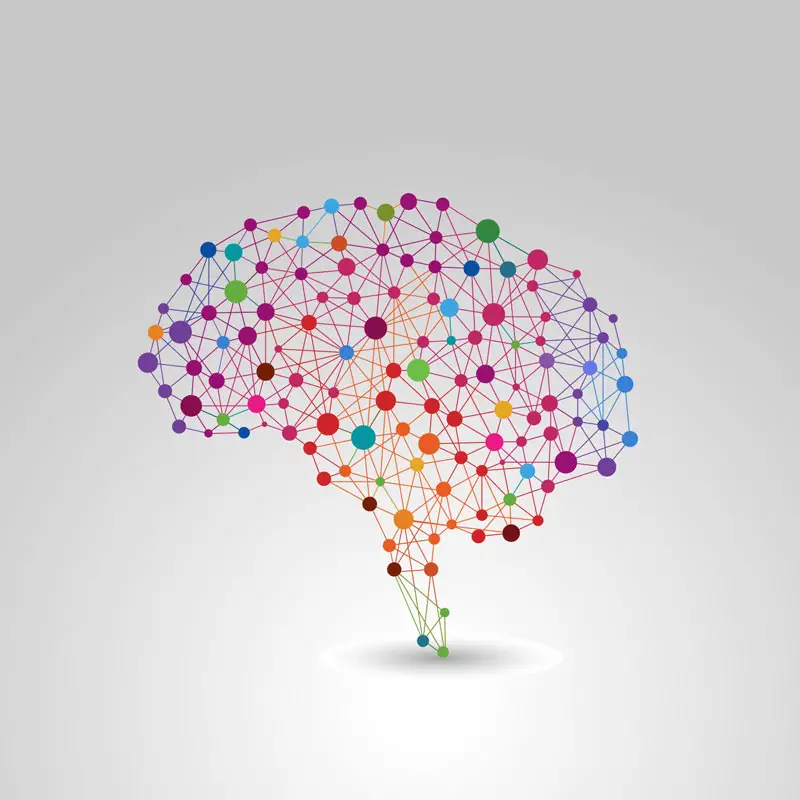
The next step is to organize and understand what your senses did in the previous step (FA). You do this by giving it a label: language . This allows you to refer to it: you see me, and you can say: that is a man.
What do you base that on? To associate the label ‘man’ with me? Thanks to past experiences (conditioning). This creates a generalization for you of what a man is. When you look at a woman, you know it is a woman because you have a representation of every woman you have ever seen in the past. Maybe you used the long hair (woman) / short hair (man) factor from your past experiences to determine whether it is a man or a woman. This is an omission of other properties.
You can see this phase as the filtering process of the ‘classic NLP communication model’. In this phase (F2), we further filter the result of FA, using distortions, generalizations, and omissions.
How do we determine what we distort, generalize and leave out? We do this filtering on the basis of conditioning : we compare and connect (‘mapping’) the flow of sensory information (previous phase) with previously coded representations, before we label it a linguistic description (we can do this with 7 +/- 2 chunks do information simultaneously (126 bits per second).
Those conditioning consist of:
- Memories
- Beliefs
- Values
- Decisions
- Time / Space / Matter (In China they think you are long and in the Netherlands they think you are short. At work you are called young and in your evening study you are called old.)
- Metaprogramma’s
- Internal representations of the past
- Language (symbols)
Thanks to the above conditioning, we can connect language to what we perceived sensually. In this phase, therefore, non-sensory filters are also used (sensory filters took place in FA). These language filters are also conditioning. Talk talk talk … This includes judgment, criticism, expectations and internal dialogue.
By transforming FA (the previous stage) in this way by coding it into language, we give it a meaning: we now label the sensory experience (internal images, sounds, feelings, tastes and smells) with language , giving us personal create meaning and through which we shape our daily conscious attention. In this way we form our ‘linguistic map’, or ‘linguistic representation’.
The result of this labeling and filtering process is the in- depth structure / linguistic map / linguistic representation: these are internal representations, composed of sounds, feelings, images, dialogue with ourselves, taste and smell. All these representations together, which arise from conditioning, form our world model.
Phase 4. Behavior and Language Output – The behavioral response as a result of the linguistic map (Programming)

This is the expression of the internal representation to the surface structure and consists of our internal and external output patterns, as a result of what has been processed in the previous steps. That could be:
- Explicit behavior and / or sentences that you pronounce.
- Verbal expression
- Subtle non-verbal external shifts
- Internal shifts
What others can perceive of this phase is never the same as what happened internally in the previous steps. 1 to 3 percent of your internal representation (previous phase) expresses itself in this surface phase and is reflected in external behavior. Consider that the person you are communicating with will understand a small percentage of that.
Classic Code NLP interventions cause changes in this phase.
After all four phases you have the structure of the subjective experience
This current state consists, within a certain context, of:
- Internal representation: the representation (what do I see, hear and feel in my mind).
- Core values or criteria (what you find important and what you believe in).
- Internal state (emotions: what kind of mood am I in?).
- External Behavior: Words and Actions.
There is a way to experience all these steps in a playful and simple way. That way is The NLP Game – created by one of the NLP teachers
The term NLP, explained on the basis of the NLP communication model
The NLP Communication Model serves as a nice basis, and even almost as a summary, to explain NLP. The term stands for Neuro-Linguistic Programming. Neuro stands for the central nervous system. Linguistics stands for spoken language and body language. Programming means that we actively manage things, your own brain and that of others. You will learn exactly how that all works in an NLP Practitioner Course.
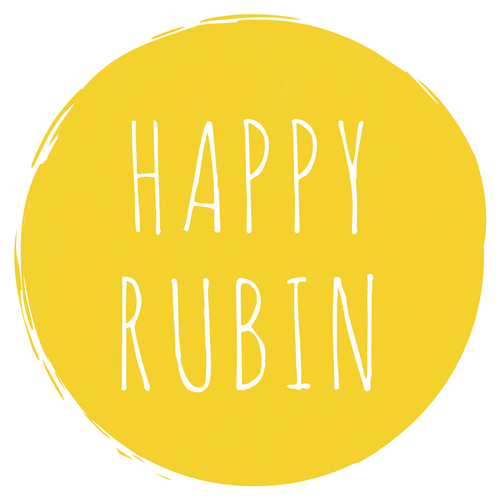
![5 Best Self Care Tips For College Students [#1 Advice]](https://happyrubin.com/wp-content/uploads/2021/09/the-best-self-care-tips-for-college-students-440x264.jpg)
![How To Stick To New Year’s Resolutions: 9 Tips [Smart & Sure Ways]](https://happyrubin.com/wp-content/uploads/2019/12/tips-voor-goede-voornemens-440x264.jpg)
![How To Stop Being So Hard On Yourself [9 Great Tips]](https://happyrubin.com/wp-content/uploads/2019/12/we-moeten-zoveel-van-onszelf-en-anderen-150x150.jpg)

![19 Best Ice Breaker & Get-To-Know-Eachother Games [Fun & Simple]](https://happyrubin.com/wp-content/uploads/2018/02/leukste-ijsbrekers.jpeg)
![Becoming More Social: 41 Tips [Improving Social Skills] [List]](https://happyrubin.com/wp-content/uploads/2018/06/sociale-vaardigheden1.jpeg)
![How to start a conversation with anyone: 15 tips [Making contact]](https://happyrubin.com/wp-content/uploads/2017/08/gesprekstechnieken1.jpeg)
![372 Friend Tag Q&A Questions [Best Friend Quiz]](https://happyrubin.com/wp-content/uploads/2019/05/best-friend-tag-vragen-voorbeelden.jpg)
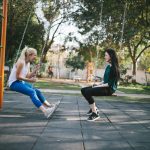


![Clingy & controlling behavior of partner/date [Extreme examples]](https://happyrubin.com/wp-content/uploads/2020/06/claimerig-gedrag-van-partner-eigenschappen-en-voorbeelden-150x150.jpg)
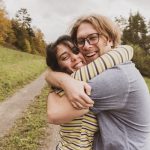
![How to recognize if a man is in love [Signals & his body language]](https://happyrubin.com/wp-content/uploads/2020/05/verliefd-gedrag-van-mannen-herkennen-150x150.jpg)


![Free will and religion / theology [Verses & Quotes on free will]](https://happyrubin.com/wp-content/uploads/2020/10/religion-on-free-will-quotes-1050x640-1-150x150.jpg)
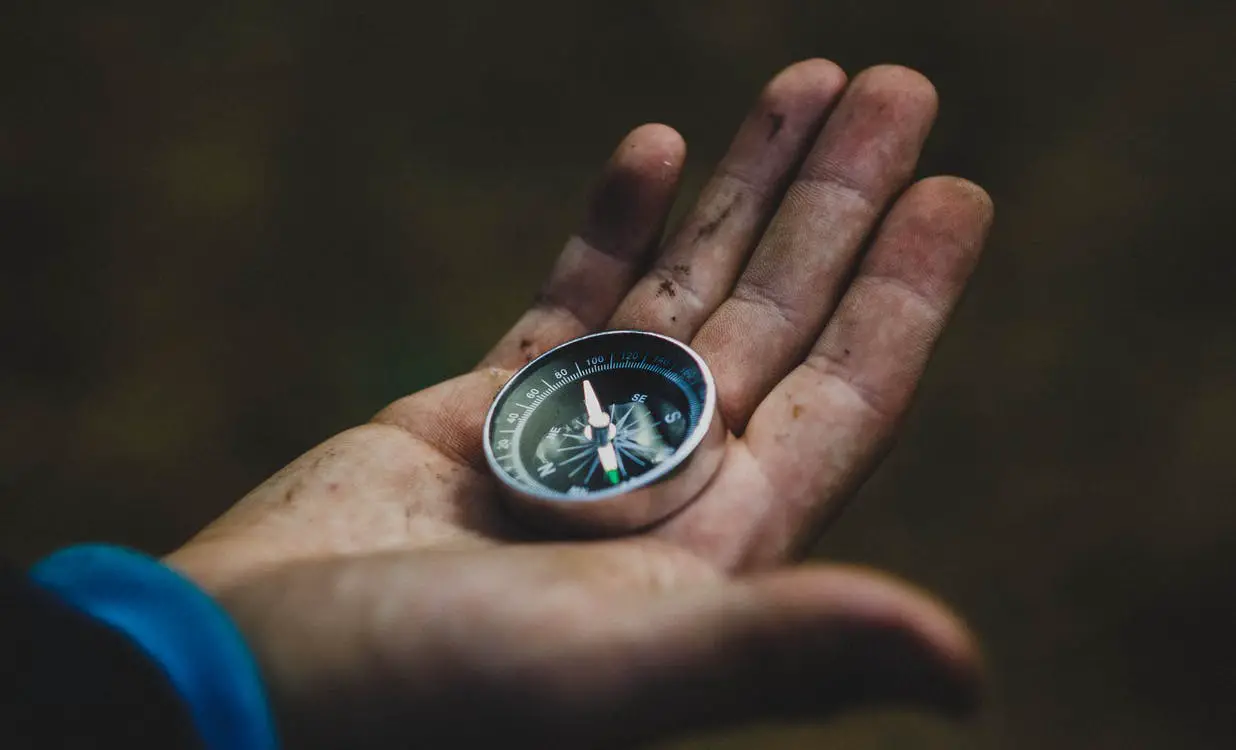
![Dealing With Setbacks & Hardship [Lessons & Examples]](https://happyrubin.com/wp-content/uploads/2018/11/omgaan-met-tegenslag-tips-hoe-dan.jpeg)
![NLP Agreement Frame: Use these exact sentences [Examples]](https://happyrubin.com/wp-content/uploads/2020/10/agreement-frame-nlp-1125x640-1-440x264.jpeg)
![122 Best Comebacks In Any Situation [Best Examples]](https://happyrubin.com/wp-content/uploads/2020/06/beste-comebacks-technieken-tips-440x264.jpg)
![Using Hypnosis to Stop Smoking [HowTo]](https://happyrubin.com/wp-content/uploads/2020/05/stoppen-met-roken-door-hypnose-150x150.jpg)
![Presuppositions language pattern: meaning & examples [NLP]](https://happyrubin.com/wp-content/uploads/2020/04/wat-zijn-vooronderstellingen-150x150.jpg)
![Peripheral Vision: Meaning & Exercise [Essential Skill]](https://happyrubin.com/wp-content/uploads/2020/04/perifeer-zicht-trainen-tips-150x150.jpg)

![How To Start A Coaching Business [21 Smart Tips]](https://happyrubin.com/wp-content/uploads/2018/11/coachingpraktijk-starten-tips.jpeg)
![How to make dreams come true? [33 tips to realize dreams 100%]](https://happyrubin.com/wp-content/uploads/2018/05/dromen-mijlpalen.jpeg)
![How To Become Rich? 27 Millionaire Tips [Guaranteed To Work]](https://happyrubin.com/wp-content/uploads/2018/01/hoe-kan-ik-rijk-worden.jpeg)
![77 Best Online Marketing Tools [Recommendations] [Also Free]](https://happyrubin.com/wp-content/uploads/2018/08/beste-onlne-marketing-tools-tips.jpeg)
![Complete List Of Virtues & Qualities [Including Explanation]](https://happyrubin.com/wp-content/uploads/2018/12/kernkwaliteiten-uitleg.jpeg)
![Being Attentive: How Do You Do That? [Meaning & 9 Tips]](https://happyrubin.com/wp-content/uploads/2019/05/attent-zijn.jpg)
![Being Conscientious: Meaning Of This Virtue [Explained]](https://happyrubin.com/wp-content/uploads/2018/07/Consciëntieus-persoon.jpg)

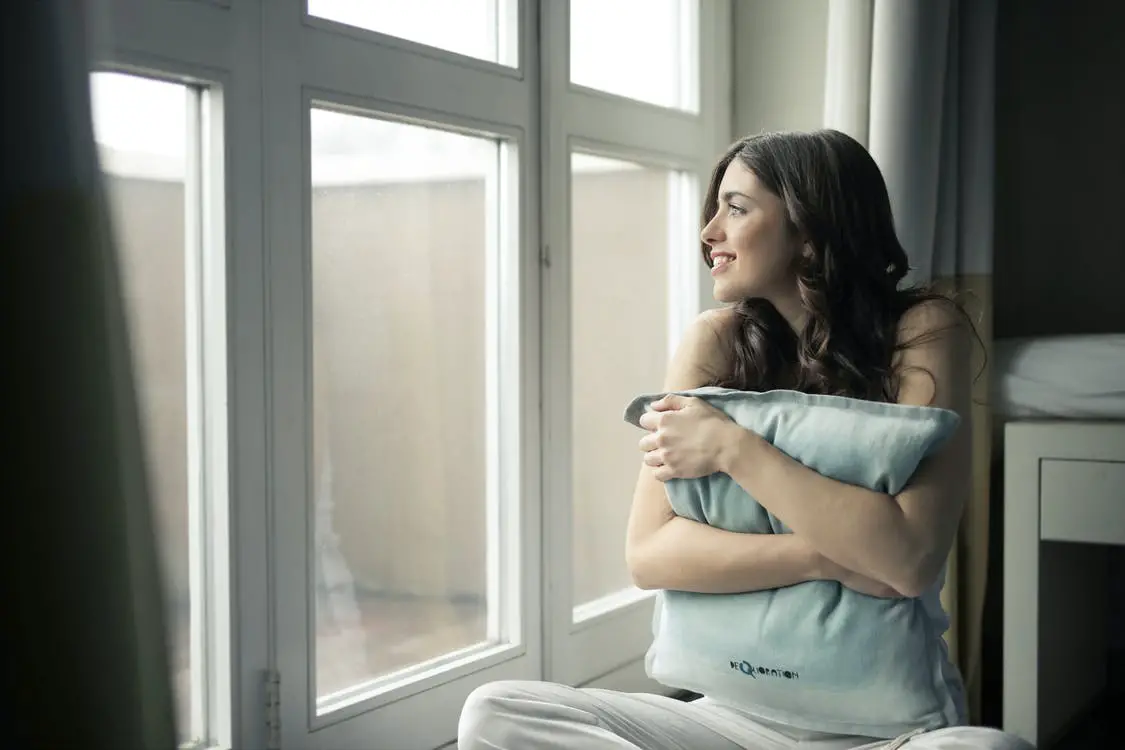
![Best Books About Burn-Out [Top 10] [Update 2025]](https://happyrubin.com/wp-content/uploads/2020/06/beste-boeken-over-burnout-lijst-440x264.jpg)
![Best Self-love Books [Top 10] [Update 2025]](https://happyrubin.com/wp-content/uploads/2020/04/beste-boeken-over-zelfliefde-aanraders-440x264.jpg)
![Life changing books: 10 books that change your life [2025 Update]](https://happyrubin.com/wp-content/uploads/2020/03/levensveranderende-boeken-tips-150x150.jpg)
![Top 10 Best Books: Recommendations Per Genre [2025 Update]](https://happyrubin.com/wp-content/uploads/2019/12/best-books-per-genre-150x150.png)
![Best Books On procrastination: Must Reads [List] [2025 Update]](https://happyrubin.com/wp-content/uploads/2019/11/beste-boeken-over-uitstelgedrag-tips-150x150.jpg)
![Joe Dispenza: Events To Attend [2025 & 2026] [All Info]](https://happyrubin.com/wp-content/uploads/2020/02/joe-dispenxa-events-440x264.png)
![Best Online Study Options [Online Education Top List]](https://happyrubin.com/wp-content/uploads/2019/03/best-home-study-options-440x264.png)
![Teachable Review & Experiences 2025 [Bad Online Training Tool?]](https://happyrubin.com/wp-content/uploads/2020/02/Teachable-review-ervaringen-150x150.png)
![Audible Review, Experiences & Special Discount [Scam?]](https://happyrubin.com/wp-content/uploads/2020/01/audible-review-ervaringen-150x150.png)
![Guest Posts Wanted [Free & Always Directly Accepted]](https://happyrubin.com/wp-content/uploads/2019/05/gastbloggen-regels.jpg)
